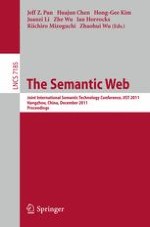This book constitutes the refereed post-proceedings of the Joint International Semantic Technology Conference, JIST 2011, held in Hangzhou, China, in December 2011. This conference is a joint event for regional semantic Web related conferences. JIST 2011 brings together the Asian Semantic Web Conference 2011 and the Chinese Semantic Web Conference 2011. The 21 revised full papers presented together with 12 short papers were carefully reviewed and selected from 82 submissions. The papers cover a wide range of topics in disciplines related to semantic technology including applications of the semantic Web, management of semantic Web data, ontology and reasoning, social semantic Web, and user interfaces to the semantic Web.
